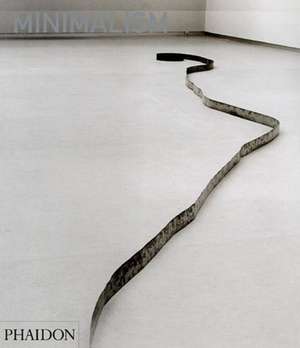Minimalism
Editat de James Meyeren Limba Engleză Paperback – 27 feb 2010 – vârsta de la 12 până la 22 ani
Tracing the origins of minimalism primarily to Frank Stella's "Black Paintings" of 1959, Meyer outlines the shifting, often warring definitions of this new kind of art. Once sculptors Andre and Judd had made their mark, there was doubt that painters could be minimalists. Brice Marden and Robert Ryman made the cut because their work was believed to be purely about the process of painting. Interestingly, although this was overwhelmingly a male club, curators also initially embraced the work of several women artists (including Agnes Martin and Anne Truitt) who retained such minimalist no-noes as irregular, handmade marks, color that could be perceived independently of form, and a belief in transcendent meaning.
Preț: 100.71 lei
Preț vechi: 109.68 lei
-8% Nou
19.27€ • 20.61$ • 16.07£
Carte indisponibilă temporar
Specificații
ISBN-10: 0714856533
Pagini: 199
Ilustrații: 296 illustrations
Dimensiuni: 250 x 289 x 15 mm
Greutate: 1.03 kg
Editura: Phaidon
Recenzii
Notă biografică
James Meyer is a writer and art historian who has been teaching contemporary art and critical theory at Emory University, Atlanta, since 1994. He is a noted specialist and lecturer in Minimalism, as well as other forms of American art of the 1960s, and contemporary forms of institutional critique. Meyer has written extensively on Minimal artists. Publications include Minimalism: Art and Polemics in the 1960s (Yale, 2001); he has contributed essays to Mel Bochner: Thought Made Visible 1966-1973 (Yale, 1995); Ellsworth Kelly: Sculpture for a Large Wall, 1957 (Matthew Marks Gallery, 1998); Eva Hesse: A Retrospective, ed. Elisabeth Sussman (San Francisco Museum of Modern Art, 2002); Conceptual Art: Theory, Myth, Practice (Cambridge, 2004) and A Minimal Future (Museum of Contemporary Art, Los Angeles, 2004). He is the editor of Carl Andre, Cuts=Texts, 1999-2004 (MIT Press, 2005) and has contributed to journals Artforum, Art Magazine, Flash Art and Parkett.
Descriere
"Minimalism" offers the first straightforward and useful summary of the output and outlook of the artists associated with minimalism in its heyday, as well as its subsequent development into more nuanced visual forms and its relationship to postmodernism. Editor James Meyer is a specialist who has written extensively on Carl Andre, Donald Judd, Dan Flavin, and Sol LeWitt, four of the seminal minimalists (the fifth is Robert Morris). Despite the intellectual thorniness of this art, Meyer avoids the turgidity that marks much of the writing associated with it.
Tracing the origins of minimalism primarily to Frank Stella's "Black Paintings" of 1959, Meyer outlines the shifting, often warring definitions of this new kind of art. Once sculptors Andre and Judd had made their mark, there was doubt that painters could be minimalists. Brice Marden and Robert Ryman made the cut because their work was believed to be purely about the process of painting. Interestingly, although this was overwhelmingly a male club, curators also initially embraced the work of several women artists (including Agnes Martin and Anne Truitt) who retained such minimalist no-noes as irregular, handmade marks, color that could be perceived independently of form, and a belief in transcendent meaning.
